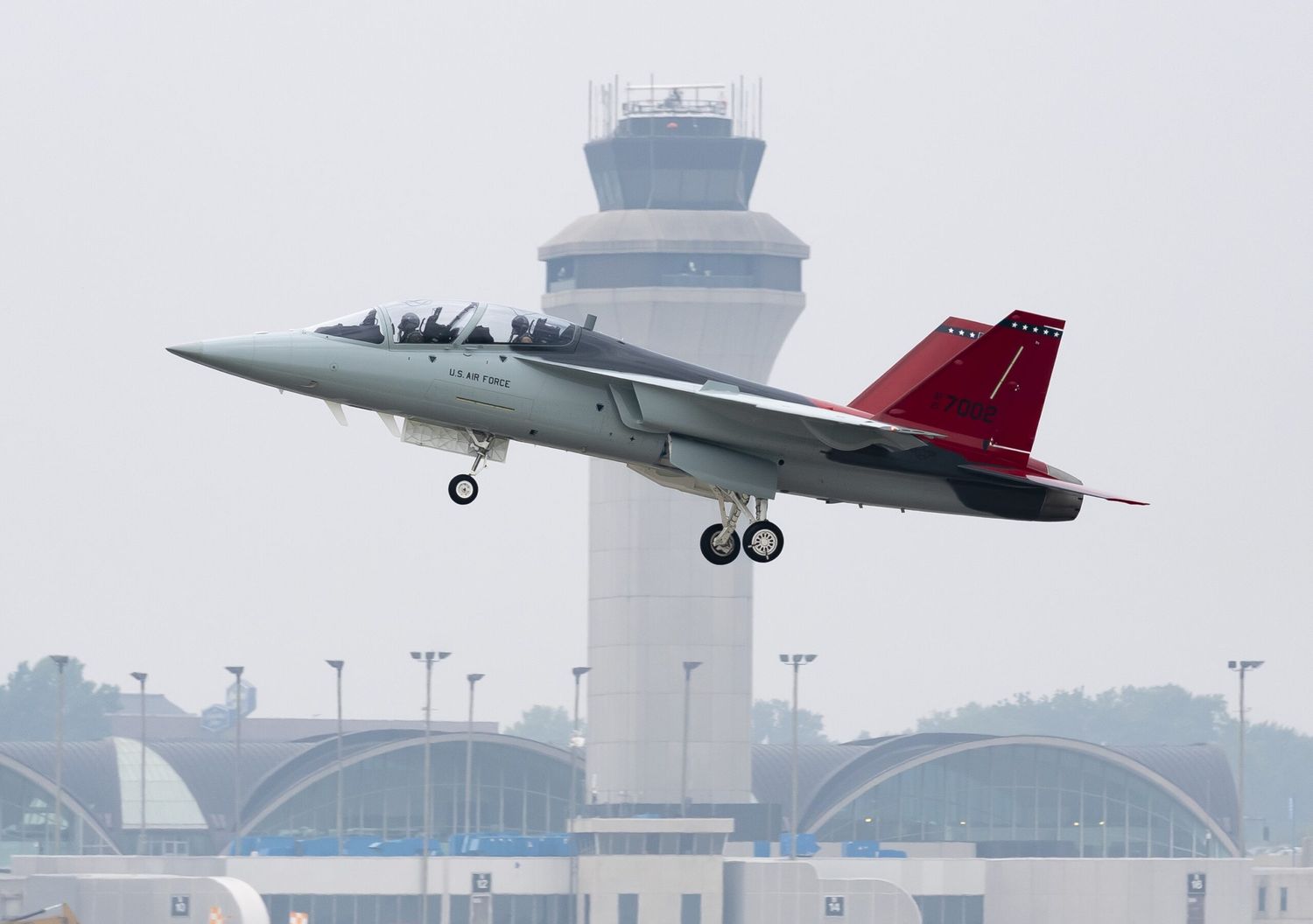The first USAF´s T-7A Red Hawk flew for the first time
Boeing and the U.S. Air Force completed the maiden flight of the service’s first T-7A Red Hawk, marking the beginning of the engineering and manufacturing development (EMD) phase of the program.
During the one-hour, three-minute flight, Maj. Bryce Turner of the USAF’s 416th Test Squadron and Steve Schmidt, Boeing’s T-7 chief test pilot, validated key aspects of the aircraft and demonstrated the power and agility of the U.S. Air Force’s first digitally designed, built and tested advanced trainer. The aircraft is one of five EMD aircraft that will be delivered to the Air Force Air Education and Training Command for further testing.
Tails of red fly overhead❗️
The first T-7A #RedHawk soared through the sky completing its first flight with the @USAirForce. A U.S. Air Force pilot tested the red-tailed jet and demonstrated the power and agility of the advanced trainer. pic.twitter.com/PTcse79HWJ
— Boeing Defense (@BoeingDefense) June 28, 2023
“The stable performance of the aircraft and its advanced cockpit and systems are game changers for U.S. Air Force student pilots and instructors alike,” said Turner, whose grandfather and father were both U.S. Air Force fighter pilots. “We’ve come a long way in training since my family role models flew.”
The T-7A’s vibrant red tails are a tribute to the Tuskegee Airmen, the first African-American U.S. military aviators to fly red-tailed fighters during World War II.
The T-7A will enhance fighter training by:
- Improved pilot readiness: The all-new advanced pilot training system uses high resolution ground-based training systems and simulators to deliver robust and realistic integrated live, virtual and constructive training capabilities.
- Safety: Model-based engineering enabled testing throughout the aircraft’s design and build to help ensure safety before the first flight. The T-7A’s cockpit egress system is the safest of any trainer.
- Flexibility for any mission: With open architecture software and digital fly-by-wire controls, the T-7A supports training for a wide variety of fighter and bomber pilots and can evolve as technologies, threats and training needs change.
“This is an exciting time for the entire team,” said Col. Kirt Cassell, U.S. Air Force T-7A Red Hawk program manager. “The Red Hawk’s digital design integrating advanced training capabilities will drastically improve pilot training for the next generation of fighter and bomber pilots.”
See also: Brazilian Air Force: interest for T-7A Red Hawk and P-8 Poseidon
The T-7A moved from firm concept to flight testing in 36 months. A combination of model-based engineering, 3D design and advanced manufacturing increased first-time quality by 75% and reduced assembly hours by 80%.
In 2018, the Air Force awarded Boeing a $9.2 billion contract for 351 T-7A advanced trainers, 46 simulators and support. The T-7A will replace the Air Force’s aging T-38 aircraft.



Comentarios
Para comentar, debés estar registrado
Por favor, iniciá sesión